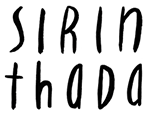I’m just beginning to explore some dog characters, so I let myself have some fun painting a few faces in my sketchbook. And yes, that is my beloved Indie in the top right corner (she can be a bit of a scaredy cat sometimes!)
For a very long time, realism was the only way I knew how to draw things. I’m still constantly trying to find the right balance between stylized versus realistic representation, and tight compositions that still feel loose, spontaneous, and alive. And when I first started sketching these puppers, they were looking far too realistic for my liking.
“Draw them with your left hand,” my partner suggested. It was just what I needed to get the right level of “wonkiness” for the undersketch, and then I went back and refined them a bit more with my usual drawing hand.
Drawing with your non-dominant hand was something I learned from my high school art teacher, but it had been ages since I tried it again. I’m so glad I did, as it’s a really great exercise to try if you’re struggling to break out of old drawing habits, or just want to explore a fresh look.














